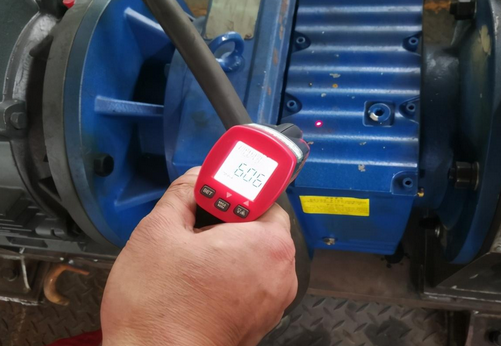Abnormal temperature rise of water pump and its solution
Abnormal temperature rise of water pumps is a common problem, which may be caused by many factors. The following is a detailed analysis of the causes and solutions of abnormal temperature rise of water pumps:
1. Excessive medium temperature
When the temperature of the medium transported by the water pump exceeds its allowable temperature, the pump head will overheat. If the motor is a long-shaft motor or a sleeve-shaft motor, the medium will also transfer heat to the motor rotor through the pump shaft, aggravating the internal temperature rise of the motor.
Solution: Use a temperature measuring gun to measure the temperature of the pump casing surface to confirm whether the medium temperature is too high. If it is too high, the medium needs to be cooled to avoid high temperature damage to the water pump.
2. "Stuffy pump" phenomenon
The outlet valve of the water pump is in a state of too small opening or closing for a long time, causing the water pump to run at a small flow rate. The medium generates heat by friction in the pump body many times, and the heat cannot be effectively dissipated, causing the pump body to continue to rise in temperature.
Solution: Discover the abnormality of small flow operation in time, open the outlet valve, and increase the water flow of the water pump to reduce the temperature of the pump casing. For planned small flow operation, it is recommended to use frequency conversion to control the water pump or add a return pipe.

3. Mechanical friction
Abnormal friction occurs inside the water pump, such as particulate impurities and pipe welding waste entering the pump casing, causing friction between the impeller cover and the pump casing, resulting in abnormal temperature rise.
Solution: Disassemble the water pump to clean up foreign objects and replace the parts that have been damaged by friction.
4. Power supply voltage problem
When the grid voltage is unstable or the wiring is wrong, the current inside the motor may be too large, resulting in an increase in the temperature rise of the stator and rotor resistance, which is manifested as abnormal motor temperature rise.
Solution: Use a multimeter to measure the phase line voltage to ensure that the voltage is within the allowable range of the motor. If the voltage is unstable, the grid voltage needs to be adjusted; if the wiring is wrong, the power supply voltage needs to be verified and the correct star-delta connection method needs to be used.
5. Poor heat dissipation
The motor heat dissipation system fails, such as the fan cover window is blocked, the fan cover is missing, the heat dissipation ribs are covered with oil, etc., resulting in the motor being unable to dissipate heat normally.
Solution: Check and clean obstacles and oil on the fan cover window and heat dissipation ribs to ensure that the motor heat dissipation system is unobstructed.
6. Problems with the motor itself
The motor winding has phase-to-phase short circuit, turn-to-turn short circuit or local grounding faults, resulting in local overheating or insulation burnout of the motor.
Solution: Check the motor winding and repair or replace the faulty part.
7. Bearing problem
Poor bearing lubrication, improper assembly, too small clearance or damage will cause the bearing temperature to rise.
Solution: Select the appropriate lubricating grease and add it according to the prescribed amount to ensure that the bearing is assembled correctly without gaps, and replace damaged bearings in time.
8. Overload operation
Long-term overload operation of the water pump, such as improper selection, changes in working conditions, etc., will cause the motor temperature to be too high.
Solution: Select the appropriate water pump model and working conditions according to actual needs to avoid overload operation.




